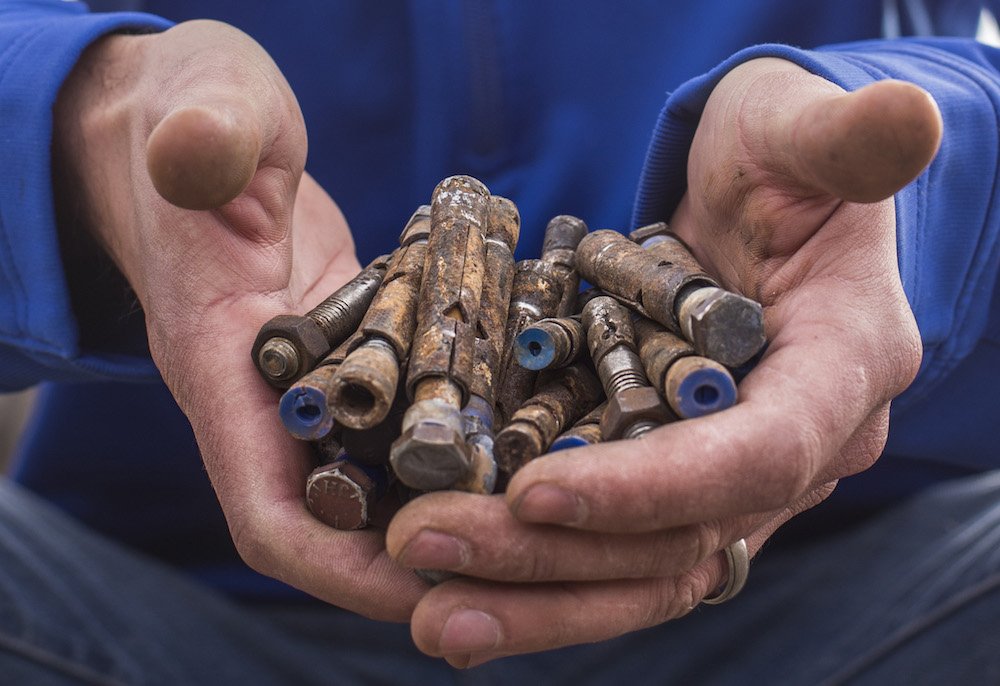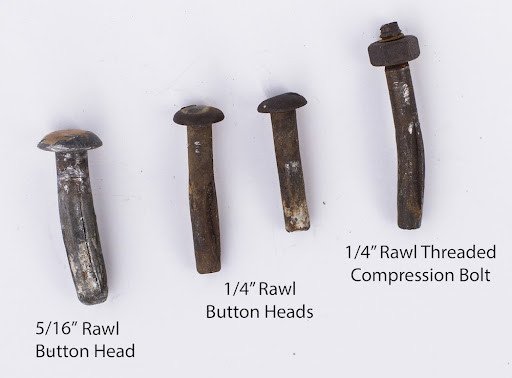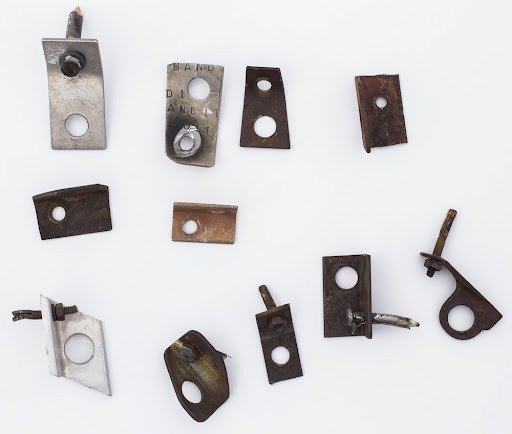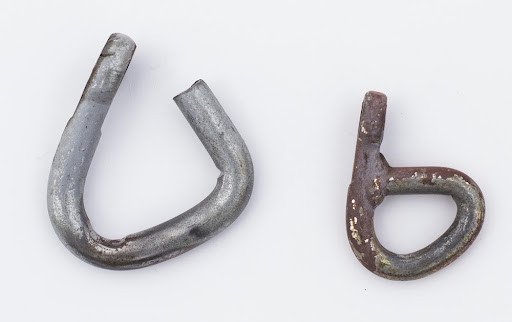Basics Every Climber Should Know
As climbers, we largely breathe a sigh of relief after clipping a bolt on a route. Bolts mean safety, we tell ourselves. Bolts let us screw up our courage and keep pushing higher. Bolts let us travel up lines that we otherwise can’t protect and let us take falls we otherwise wouldn’t hazard.
But bolts can—and do—fail. Examples of bolt catastrophes are mercifully rare, but they happen: rusty bolts break, corroded hangers crack, bolts installed in incorrectly sized holes pull out, and over-tightened bolts snap. The huge number of bolts placed during the ‘80s and ‘90s, when sport climbing exploded onto the scene, are aging out. Many of the bolts from classic backcountry routes are even older.
Today, many climbers often take for granted the hardware that allows us to ascend and descend otherwise unattainable cliffs and formations. But climbers have been using bolts since the late 1800s, and in the early days, decisions on what hardware to use were often driven by ease of use and accessibility, personal preference, and cost. Although there are significant rebolting efforts now taking place around the country to equip climbing areas with safer, more up-to-date equipment, there are still plenty of sleeping giants out there that should not be underestimated. But whose job is it to ensure that bolts and other fixed anchors are of the highest quality and properly maintained for safety?
The answer is that it is every climber’s responsibility to inspect fixed anchors on the route they want to climb before trusting their life to that gear. We must all be educated in the basics of fixed anchor inspection and play our part in taking care of our climbing areas. Below is some basic information to help you identify bad bolts.
Bad Bolts to Look Out For
In climbing, the term “bolt” is broadly defined to include any metal device meant to be placed or hammered into a pre-drilled hole in a rock face. Depending on the rock type and style of development in an area, bolts are held in place through friction within a drilled hole, an adhesive known as epoxy, or in some cases, both. There are several types of climbing bolts that can be found throughout the country, covering a wide range of uses and safety implications. Keep an eye out for these common types of outdated and worrisome bolts:
Button Heads & ¼ -inch Climbing Bolts
Thanks to bolt replacement efforts, this variety of bolt is becoming increasingly rare at well-traveled cliffs. With that said, they can still be found whether exploring a local crag or spending the day in alpine environments. These bolts are typically compression-style bolts that act similarly to a piton: Their holding power relies on their being driven into a hole slightly smaller than the bolt’s diameter. When encountering a button head or ¼-inch bolts, climbers should be wary. There are numerous incidences when these types of bolts have been removed with little more than a few hard jerks using a quickdraw, and while these bolts can vary in pullout strength in granite, consider them downright dangerous in softer rock, such as sandstone or limestone.
Sheath Climbing Bolts or Star Drives
The most common type of sheath bolts are Star Dryvins. Often called star drives, these bolts can be identified by the star stamped on their heads, but other varieties exist, and the flat nail head should be the primary giveaway. This type of bolt tends to have a high degree of variability in terms of how bomber they are, making them unreliable and cause for concern.
Self-Drill Climbing Bolts
When casually viewed, many self-drive style bolts can look a lot like modern 5-piece sleeve bolts, which are commonly used in modern bolt replacement efforts. However, a closer examination reveals a hex head that is larger than that of a modern bolt. While they can seem difficult to remove, the short bolt stud combined with a propensity for the drilling teeth to become dull prior to the bolt being fully drilled make these bolts something to watch out for.
Types of Climbing Hangers to Look Out For
It is also important to understand the differences between climbing hangers, which are the metal “loops” that hang off a bolt for clipping a carabiner or quickdraw.
Homemade Climbing Hangers
Before hangers were produced commercially, climbers made homemade hangers with whatever materials they could find, ranging from hacked-off bedframes to full-on weld jobs. These hangers are old, often susceptible to corrosion, and unknown in their strength and durability.
Leepers
One of the most unsafe types of hanger a climber will come across is a Leeper hanger, which is easy to identify by its typically blackened color and semi-sharp edges compared to the rounded shape of a modern hanger. Leeper hangers were the first commercially made hangers designed specifically for climbing. However, because they were the first, not all the kinks had been worked out before they went into mass production. In fact, they were eventually recalled because they tended to crack, but not until after entire crags were fully equipped with them.
SMC Hangers
These hangers came in two widths. The thin hangers—which are almost exactly the width of a single quarter and have a horizontal “SMC” stamp on the metal—were used from the late ’70s to early ’80s and are nearly as bad as Leeper hangers. The newer, thicker hangers—identified by a vertical “SMC” stamp—placed later in the ’80s are about the width of two quarters and are stronger, but they’re still very old and should be on the list for replacement.
Bad Climbing Anchors
Here, we are specifically referring to anchors at the top of a pitch that are used for lowering to the ground or setting up a belay for the next pitch.
Cold Shuts
These have been used on routes as recently as the ’90s. There are two types of cold shuts, open and closed, and both are dangerous. Many cold shuts were welded in a climber’s garage, leading to great variability in strength. Explaining the danger of these anchors, Sandor Nagay wrote in Climbing magazine, “None of us would climb on a rope that our buddy wove in his garage, but many of us trust cold shuts implicitly.” Nagay, a mechanical engineer, and Will Manion, a civil engineer, did extensive testing with cold shuts, including both ⅜-inch and ½-inch versions. The variances in strength were extreme, ranging from 2,120 pounds to 8,180 pounds, with almost all of them failing at the weld. By comparison, most modern bolt hangers have an average strength of at least 6,400 pounds, about twice the force a 175-pound climber can generate during a lead fall.
Chain and Washer
Just no. The primary issue with this setup is that the space taken up by the washer and chain results in less of the bolt actually going into the rock. This can also result in the bolt bending. Both of these issues combine to create a huge “watch-out” situation when it comes to the strength and integrity of the anchor.
Other Safety Issues to Look Out For
Identifying different types of problematic equipment is just one piece of the puzzle. Climbers should also take these factors into account when determining the safety of a route or climbing area.
Worn Hangers
Regardless of type or brand, worn hangers are nearly always a concern. The inner edge of virtually any modern hanger—where the carabiner rests—is relatively sharp and not meant for rappelling off directly. When this inner edge gets nicks or burrs on it, it can transfer that damage to your carabiner and, ultimately, your rope.
Type of Metal
In most areas of the U.S., stainless steel is the standard for modern climbing bolts as it is more resistant to corrosion than previously used materials. In the early years of bolting, many route developers used plated steel, which is more affected by the elements and more susceptible to corrosion. That being said, even modern bolts with visible signs of corrosion should be flagged. Even far from the coast, corrosion can become a serious problem over time, as salt and moisture build up and degrade climbing bolts. Climbers in the ’80s, concerned about water getting to the bolt, began sealing the bolt openings with glue. Unfortunately, this had the opposite effect in some cases and actually trapped water inside the bolt hole, speeding up the corrosion process even more. So, even when you see glue-in bolts, don’t immediately assume they’re safe and reliable.
Quick Tip: You can easily tell if a piece of gear is stainless or plated steel. First, if your bolts don’t specifically say stainless steel, they’re not. Second, you can use the magnet test. If a bolt gets instantly drawn to a magnet, even a refrigerator magnet, it’s made of plated steel and should not be used for climbing protection.
Mixed Metals
Hangers that are made of a different type of metal than the bolt they are attached to are a huge safety concern. When metals are mixed, galvanic corrosion starts to happen at an alarming rate. Sometimes, the mixed metal scenario is introduced when a well-meaning climber replaces only the hangers on the route and not the bolts. This can create the illusion of a safer route with solid-looking bolts, but beneath the surface, the bolts may now be corroding at a quicker pace.
Spinners
One of the more common “bad bolt” reports shared by climbers is spinning or loose bolts. Every situation is different, but the most common issue tends to be that the nut holding the hanger against the rock face has loosened and needs to be tightened back down to just past hand tightened—a small crescent wrench will do the trick. Modern 5-piece bolts can be a bit more complicated since a loose bolt head can allow parts of the bolt to become unscrewed. Even if bolt integrity isn’t compromised, a spinning hanger allows greater leverage to be applied to the bolt, which reduces the overall bolt strength.
A note on fixing spinners:
Newly installed bolts should always be adjusted to the specified level using a torque wrench, but spinners can be fixed with a simple crescent wrench. It's only necessary to tighten a loose nut on a spinner back down to a little bit past hand-tight. Tightening back to spec can shorten the life of the bolt.
Rock Quality & Anchor Location
Be mindful of where a piece of gear has been placed on the wall. For example, bolts placed in fractured rock, hollow flakes, crumbly sections, or too close to the edges of overhangs or arêtes may fail because the rock itself isn’t strong enough to withstand the force of a fall.
Type of Rock
Rock type plays a big role in determining whether or not a certain type of fixed anchor is appropriate for that area. Rock strength can vary significantly by rock type and can even vary from one crag to another of the same rock type. In general, modern mechanical bolts are ideal for areas with harder rock such as granite, situations where the bolt may need to be removed, or in alpine conditions. Glue-in bolts are more fitting for softer rock types and routes that see a lot of traffic, as they are extremely durable. For glue-in bolts to properly set, the glue should be applied according to the manufacturer’s specifications or the glue will not cure.
Key Takeaways
Being able to recognize a potentially dangerous piece of equipment is an invaluable skill and will allow you to continue doing the thing you love. Before your next trip to the crag, make sure you are familiar with:
How to identify old and hazardous fixed anchors
How to properly fix a spinner (avoid the route if you don’t have the right tools)
The type of rock you’re climbing on and what kind of fixed gear is appropriate there
How to connect with your local climbing organization to report any concerning pieces of hardware











